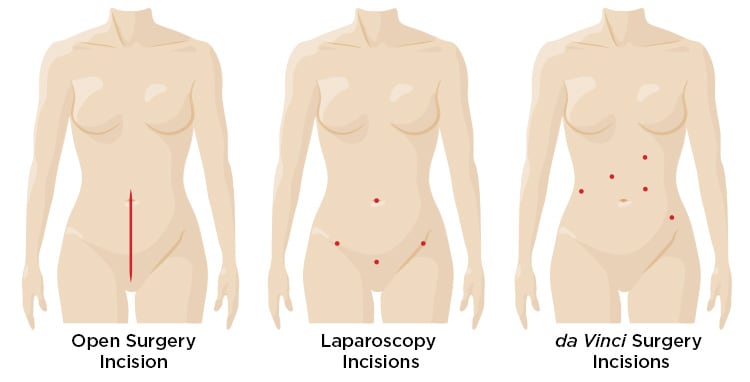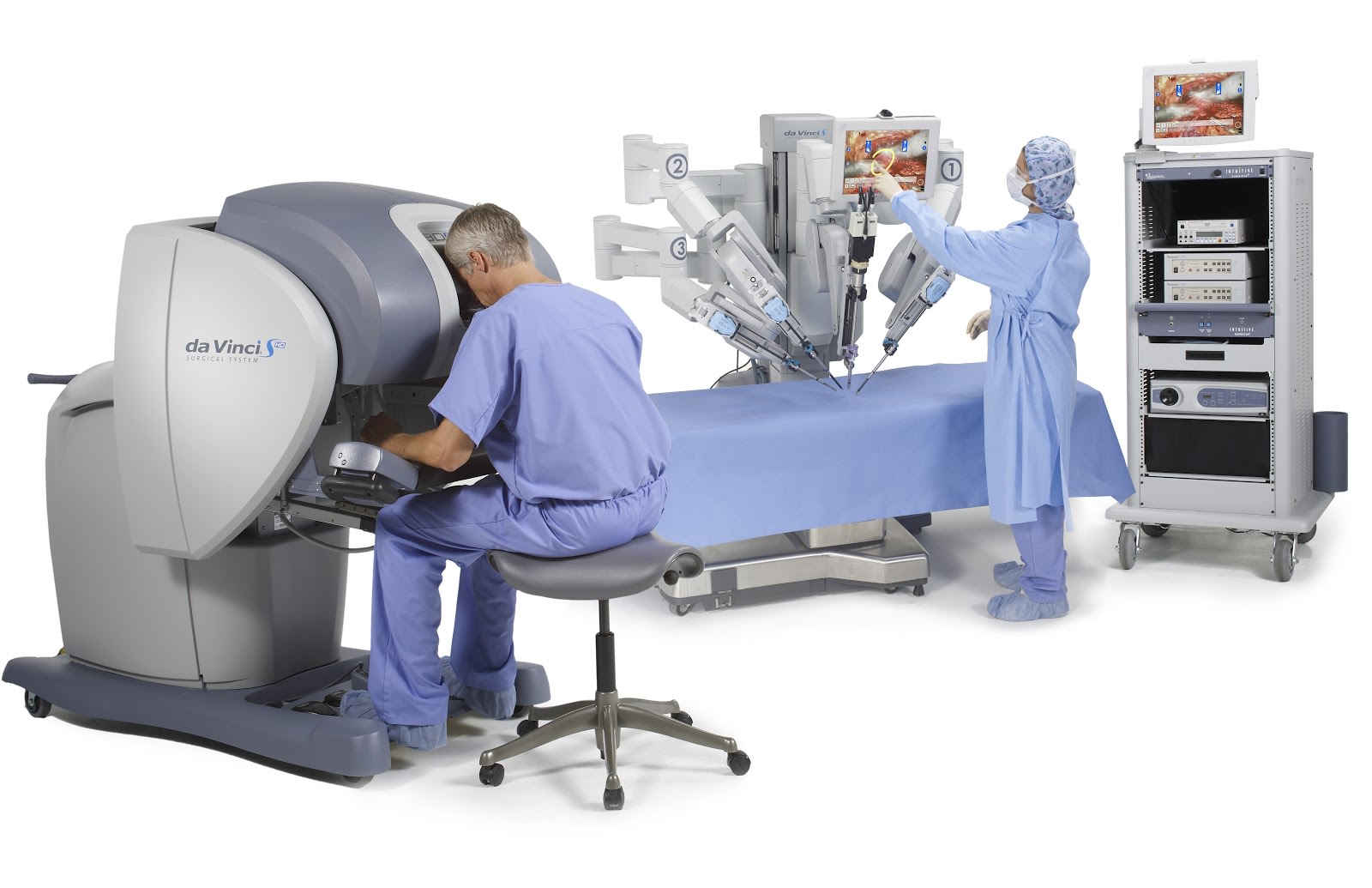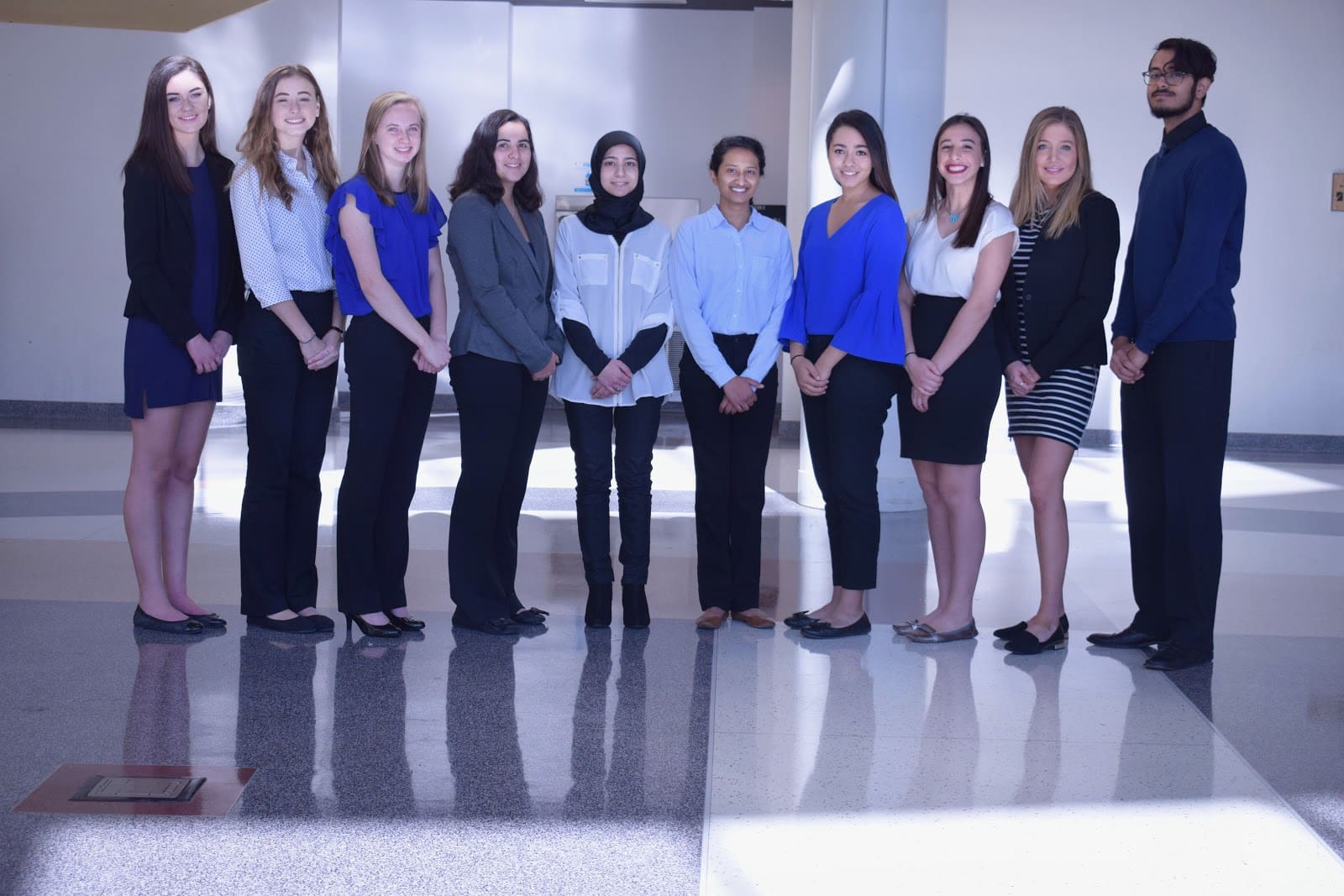This project is now in update mode. Check back regularly to see how things are progressing.
New Feedback System for Robotic Surgeries
What is Robotic-Assisted Surgery?
Introduced in 2000, Robotic-Assisted Surgery is a type of minimally invasive surgery. It has been used to perform over 3 million (and counting) procedures worldwide in an array of areas including cardiac, colorectal, head and neck, neurological, gynecological, urological, general and thoracic specialties. Because Robotic-Assisted Surgery is performed through small incisions like in minimally invasive surgery, it retains the patient benefits such as both decreased blood loss and risk of infection as well as less pain/scarring. At the same time, it fixes the problems from traditional minimally invasive techniques by restoring the surgeon’s range of motion and depth perception in an ergonomic platform that also controls for a surgeon’s hand tremors.
A comparison of incision size for a hysterectomy when performed with open surgery, traditional minimally invasive techniques and Robotic-Assisted surgery. (from http://www.davincisurgery.com/assets/images/da-vinci_hysterectomy_benign_incision_comparison.png)
However, because the surgeon and patient are separated in this technique, surgeons have to rely solely on visual feedback, which is the issue our team is going to combat!
Who are we?
We are Team FEELS, an undergraduate research team formed under the Gemstone Honors Program at the University of Maryland. This student-proposed research project is being conducted by 10 undergraduate students with a variety of expertise and our faculty mentor, Dr. Bao Yang.
What is our solution?
Our team plans to integrate haptic feedback into robotic surgical systems. Haptic feedback will allow the surgeon to receive tactile information about the tissue and feel the physical characteristics of the tissue on which they are operating. It also will decrease the surgeons’ error rates, lower operative times, and help minimize the steep learning curve associated with learning robotic surgical techniques.
How?
Our solution will be implemented in a 3 part approach: Sensor, Relay, and Feedback. In the first phase, we will sense the firmness of tissue in the surgical field. These values will be transmitted and interpreted into usable values during the Relay phase. In the feedback component, a novel material will mimic the firmness of tissue in the surgical field. Our end goal is that this proof-of-concept tactile feedback system may later be integrated with a robotic surgical system like the Da Vinci!
How Can You Help?
Research materials and lab equipment including artificial tissue components, pressure-based sensors, relay machinery, computer software to code our data, feedback parts to assemble a prototype and materials for our testing apparatus are all costly and not easily attainable as Undergraduates. Your donation will be aiding us in purchasing these crucial components and eventually contributing to a cumulative prototype that will be applicable to robotic surgical systems and may one day save lives. We appreciate any and every donation that you can make to our cause!
Questions?
Contact us at teamfeels.gemstone@gmail.com
Follow our progress!
on our website
or on Twitter! @team_FEELS_
Find out more about the Gemstone Honors Program at www.gemstone.umd.edu
Gifts in support of the University of Maryland are accepted and managed by the University of Maryland College Park Foundation, Inc., an affiliated 501(c)(3) organization authorized by the Board of Regents. Contributions to the University of Maryland are tax deductible as allowed by law. Please see your tax advisor for details.
$5
Sensor
You will help our team test the firmness of soft tissue, giving us valuable data to relay to the surgeon.
$10
Participant Compensation
You will help our team recruit people to test our prototype, ensuring the complete system works properly.
$25
Circuitboard
You will help us purchase a circuitboard, the most important component to collect and process data.
$50
Artificial Tissue
You will help us mimic the feel of human tissue so we can test our system.
$100
Feedback Mechanism
You will help purchase the device the surgeon interacts with to mimic tissue firmness.






